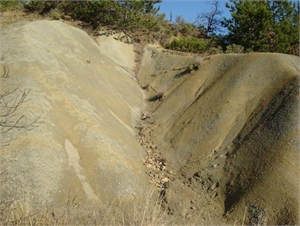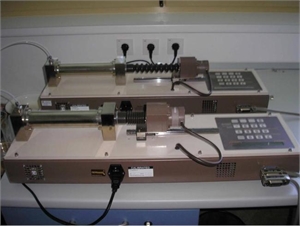RESULTS/TESTIMONIAL
The flow rate was controlled with GDS‟s advanced pressure/volume controllers connected to the top and bottom of the specimen. The cell pressure on top of the specimen was applied through the air/water constant pressure system operated by an air compressor. The results prove that tested compacted marl material can achieve permeability less than 1x10-7cm/s. The results of this research were published at ISRM Regional Symposium EUROCK 2009.
In the meantime, as a part of a scientific project “Characterization of Municipal Solid Waste” (also financially supported by Croatian ministry of science, education and sports), the University developed a large odometer device with sample diameter of 500 mm and sample height of 200 mm, with a maximum pressure capacity of 2000 kPa.

Fig. 2 Marl exposure at Paz site |
The main purpose of this device was to measure stiffness of mechanically and biologically pre-treated municipal solid waste (Mechanical Biological Treatment, or MBT waste). It is also possible for this oedometer to measure soil stiffness. In order to verify the reliability of results obtained with the device.
The University compared its results with results published from other authors, and had a very satisfactory outcome. In order to verify the reliability of results obtained with the Universities oedometer, the University plans to compare its results with those obtained using the GDS consolidation system. The University considers the results obtained from the GDS consolidation system as a reference „bench mark‟ value. They hope that results will be in positive agreement just as it was the case for the MBT samples. The on-going research is planned to be complete in the summer of 2010.

Fig.3 GDS's Instruments advanced pressure controllers |